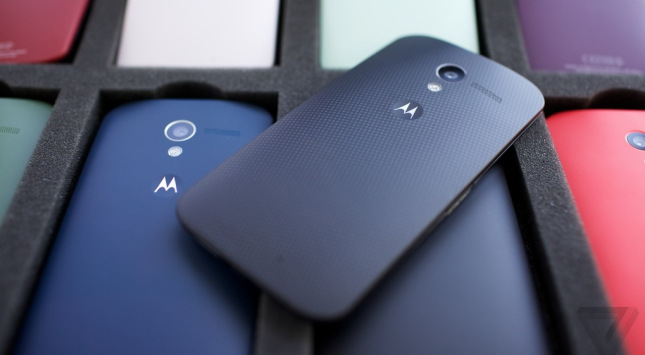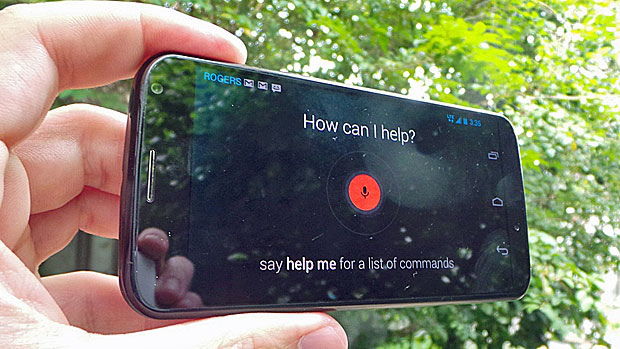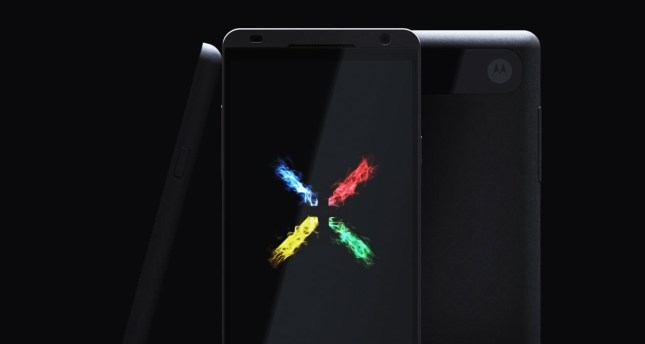I had a chance to lob some questions at Motorola Mobility CEO Sanjay Jha and Motorola Canada president Michelle Digulla on Tuesday following the announcement of the company’s latest phone, the Droid Razr (just Razr to us foreigners). We discussed a variety of topics, including the company’s impending marriage to Google and new cellphone carriers in Canada. So, with no further ado, here’s a transcript of some of those conversations.
 What sort of changes do you anticipate in the merger with Google?
What sort of changes do you anticipate in the merger with Google?
Jha: It’s too early to tell. You guys probably have the same laws in Canada, it’s called gun-jumping laws. You can’t start acting as one company [before you actually merge]. It’s really when the deal closes that you can get together and plan out what you want to do. So we haven’t got engaged in thinking about what strategy we’re going to pursue post-consummation, but I would say the following. Google is a scale company, they care about scale. I have constraints in that I have to meet quarterly numbers, which is a good thing - it’s certainly good discipline - but it’s a bad thing as well because if I wanted to invest, for instance, a $100 million to just make my brand name more accepted for two quarters and in the third quarter I’ll get traction, that’s not an option I would consider without a lot of pull. In Google’s structure, that’s what we could do, that’s more of an option.
So you could become more of a long-term-thinking company?
Jha: That option exists. Again, I don’t know what we will do, I can’t tell you, but that option exists.
The Razr is exclusive to Verizon in the U.S. and Rogers in Canada. Why go the exclusive route and what is the future of that strategy?
Jha: It gets tied pretty closely with two things. One is what technology are they employing. When I say technology it’s not just the radio access - Verizon obviously has CDMA - but we end up having to do so much extra work with carriers porting what we call their carrier-branded services. There comes a point where you say it’s sort of exclusive anyway, so we might as well work closely and meet their requirements even more fully. In return, we get more marketing dollars [from them] and we both succeed in the market together. That’s how the tradeoff usually works.
By and large, if it’s a device that launches across multiple carriers, the motivation the carriers have to put marketing dollars behind it is not that large. Then you have to say, ‘I’d better be very large so I can put marketing dollars behind it.’ That’s the tradeoff you have to make. Samsung and Apple, because of their scale, can make that tradeoff. Not all of us can make it. Once we get that scale and have that option, we’ll make that tradeoff.
How have carriers treated Android in Canada? There have been conflicting reports that they’ve pushed it or held it back in favour of iPhone and BlackBerry.
Digulla: Android brings a completely new set of requirements so you could say it has a wider price range. You can see devices, and you see this from Motorola, come down to a very low tier up to the very high end with the Razr, so it provides more breadth. You could argue it provides a better ecosystem because it’s open and all of us are building on what’s already there, so there are definitely some advantages from a pricing and capability perspective.
But what sort of marketing push have you seen for Android phones from carriers?
Digulla: The Razr particularly will have a huge push with Rogers. It’ll be part of their “hero” campaign at the beginning of November.
What’s the roadmap for new carriers such as Wind and Mobilicity, who use a similar frequency to T-Mobile in the U.S.? Are you waiting to see what happens with AT&T’s attempted takeover of T-Mobile?
Digulla: I can’t share with you specifics on roadmaps with different carriers, but I do think it’s tied. Having a major AWS-banded U.S. carrier that demands millions of phones will impact the availability of global [devices].
 Need more evidence that smartphone prices are about to tank? Look no further than Lenovo’s announcement on Wednesday to buy Motorola from Google for $2.9 billion. While the deal gives the Chinese company its long desired presence in the Western smartphone market, it also represents a looming commoditization. The rule of thumb with Lenovo is: when the company comes knocking, your product is probably about to jump the shark, if it hasn’t already.
Need more evidence that smartphone prices are about to tank? Look no further than Lenovo’s announcement on Wednesday to buy Motorola from Google for $2.9 billion. While the deal gives the Chinese company its long desired presence in the Western smartphone market, it also represents a looming commoditization. The rule of thumb with Lenovo is: when the company comes knocking, your product is probably about to jump the shark, if it hasn’t already.


